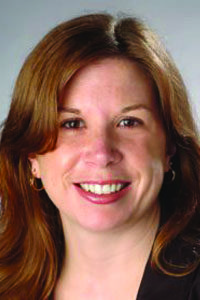Syracuse University Professors Melissa Green and Amber Bartosh are collaborating on a project that attempts to use virtual reality software to create immersive data visualizations for architecture and engineering purposes.
Project Developing a platform to communicate quantified data using a virtual reality (VR)-enabled immersive and interactive environment.
[vc_row][vc_column width=”1/2″][vc_column_text]Amber Bartosh
Assistant Professor, Syracuse Architecture, Syracuse University
See a list of Professor Amber Bartosh’s published research
[/vc_column_text][/vc_column][vc_column width=”1/2″][vc_column_text]
Melissa Green
Associate Professor, Department of Mechanical and Aerospace Engineering, College of Engineering and Computer Science, Syracuse University
Intellectual Collision Bartosh is an architect who uses virtual reality to visualize things like energy flows around people in a building. Green, a mechanical and aerospace engineer, seeks to use the same technology to visualize fluid flows, such as around fins in water. “We see alignments between what we’re trying to do in terms of data visualization,” says Bartosh. “It’s not that crazy a pairing when you think about it from that standpoint.”
Nuts and Bolts Advancements in digital modeling tools have dramatically increased the amount of spatial data relating to fluid dynamics flow visualization, and building energy systems. However, the two-dimensional systems typically used to represent this data usually oversimplify complex three-dimensional conditions. With initial funding from SyracuseCoE as part of the Faculty Fellows Program, followed by a CUSE Innovation Grant from Syracuse University, Bartosh and Green are working to make links among traditional architecture, engineering software, and virtual reality software to create immersive data visualizations.
Challenges It’s a difficult process. While it’s easy to represent a building visually, it’s more challenging to show how a building is going to perform in terms of thermal control or daylighting. “Those things are more difficult to convey because we’re not used to seeing that data in 3-D,” says Bartosh. “We can measure it and record it in charts or spreadsheets, but what we’re trying to do is bring that into this virtual environment, feeling like you’re walking through the real space with the temporal qualities specifically related to energy and flow that we are trying to visualize.”
Real-World Collaboration Bartosh is using projects from SyracuseCoE Partner firm Ashley McGraw Architects as test cases for data visualization methods to see if they help with communication. In turn, Ashley McGraw has integrated VR into its practice after seeing how the technology was being used by architecture faculty working at the SyracuseCoE Interactive Design and Visualization Lab (IDVL).
SyracuseCoE Impact Bartosh and Green are both SyracuseCoE Faculty Fellows working out of labs at SyracuseCoE headquarters. Green directs the Flow Visualization Lab, while Bartosh works out of the IDVL. SyracuseCoE funding allowed for the purchase of VR equipment used for their current project. “The space and resources we have here are fundamental to what we do,” Bartosh says.
Bottom Line The collaboration is an attempt to make data visualization a more streamlined process for each of their own labs and, ultimately, a feasible product transferable to other STEM and design disciplines.
